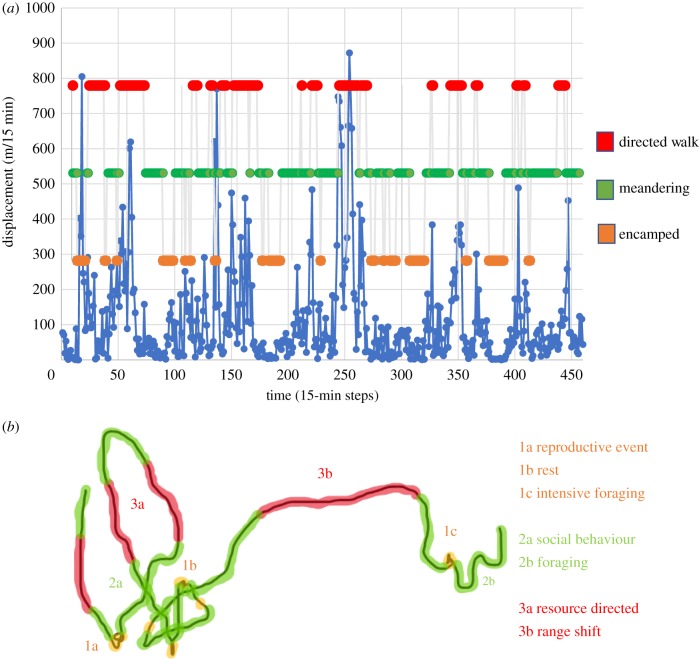Figure 3.
Discretizing the movement path of an individual can elucidate structure in movement behaviour. (a) Plotting the step lengths shows heterogeneity in speed often equated to different behavioural functions of the animal's motion (blue line). Similarly, heterogeneity in turning angle captures aspects of the behavioural function of the animal's movement (not shown). Using approaches to identify probabilistic-based movement states allows the simplification of the movement into specific categories of motion (e.g. directed walks characterized by high speed and little change in bearing (red), meandering characterized by slower speed and less direction (green), and encamped characterized by short to no displacement and little directional persistence (orange)). (b) Overlaying the state definition of the movement path helps elucidate structure in the movement path. Relating these defined states to observed behaviour can resolve the function of the movements.

